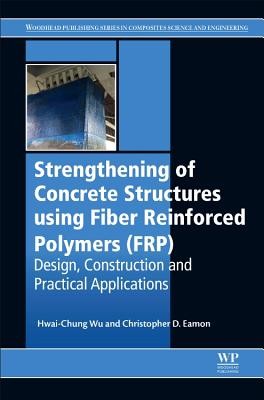
- We will send in 10–14 business days.
- Author: Hwai-Chung Wu
- Publisher: Woodhead Publishing
- ISBN-10: 0081006365
- ISBN-13: 9780081006368
- Format: 15.8 x 23.1 x 2.3 cm, kieti viršeliai
- Language: English
- SAVE -10% with code: EXTRA
Strengthening of Concrete Structures Using Fiber Reinforced Polymers (Frp) (e-book) (used book) | bookbook.eu
Reviews
Description
Strengthening of Concrete Structures Using Fiber Reinforced Polymers (FRP): Design, Construction and Practical Applications presents a best practice guide on the structural design and strengthening of bridge structures using advanced Fiber Reinforced Polymer (FRP) composites. The book briefly covers the basic concepts of FRP materials and composite mechanics, while focusing on practical design and construction issues, including inspection and quality control, paying special attention to the differences in various design codes (US, Japan, and Europe) and recommendations.
At present, several design guides from the US, Japan, and Europe are available. These guidelines are often inconsistent and do not cover all necessary design and inspection issues to the same degree of detail. This book provides a critical review and comparison of these guidelines, and then puts forward best practice recommendations, filling a significant gap in the literature, and serving as an important resource for engineers, architects, academics, and students interested in FRP materials and their structural applications. Written from a practitioner's point-of-view, it is a valuable design book for structural engineers all over the world.
EXTRA 10 % discount with code: EXTRA
The promotion ends in 22d.23:38:51
The discount code is valid when purchasing from 10 €. Discounts do not stack.
- Author: Hwai-Chung Wu
- Publisher: Woodhead Publishing
- ISBN-10: 0081006365
- ISBN-13: 9780081006368
- Format: 15.8 x 23.1 x 2.3 cm, kieti viršeliai
- Language: English English
Strengthening of Concrete Structures Using Fiber Reinforced Polymers (FRP): Design, Construction and Practical Applications presents a best practice guide on the structural design and strengthening of bridge structures using advanced Fiber Reinforced Polymer (FRP) composites. The book briefly covers the basic concepts of FRP materials and composite mechanics, while focusing on practical design and construction issues, including inspection and quality control, paying special attention to the differences in various design codes (US, Japan, and Europe) and recommendations.
At present, several design guides from the US, Japan, and Europe are available. These guidelines are often inconsistent and do not cover all necessary design and inspection issues to the same degree of detail. This book provides a critical review and comparison of these guidelines, and then puts forward best practice recommendations, filling a significant gap in the literature, and serving as an important resource for engineers, architects, academics, and students interested in FRP materials and their structural applications. Written from a practitioner's point-of-view, it is a valuable design book for structural engineers all over the world.


Reviews